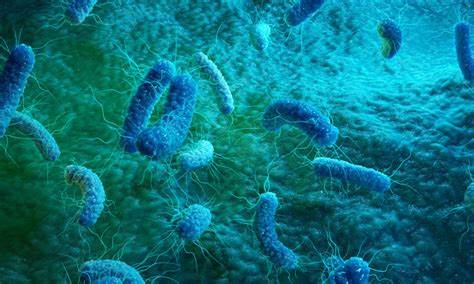Burkholderia cepacia - a common nosocomial pathogen
Burkholderia cepacia (Bc) was isolated from rotten onion bulbs in 1950 and was previously named Pseudomonas cepacia. In recent years, due to the extensive use of immunosuppressants, the widespread development of invasive diagnosis and treatment techniques, and the widespread use of broad-spectrum antibiotics (especially third-generation cephalosporins, carbapenems, etc.), the Bc isolation rate has continued to rise, which is an important condition for hospital infection. One of the pathogenic bacteria.
Burkholderia cepacia (BC) is one of several important opportunistic pathogens of nosocomial infection, usually not pathogenic to healthy humans, mostly invading individuals with weakened immunity, and often colonizing cystic fibrosis It is a highly virulent and lethal pathogenic bacteria in the lungs of patients with chronic granulomatosis and chronic granuloma. In recent years, the clinical isolation rate of the bacteria has been increasing, and it has high resistance to a variety of antibiotics, so there are difficulties in clinical treatment.
 Biological properties
Biological properties
The bacterium is aerobic non-fermentative, gram-negative non-bacillus, commonly found in moist soil, water, plants, etc., and can survive and grow in nutrient-deficient water. The nutrient requirements are not high, and it generally grows well on ordinary medium. The most suitable growth temperature is 30-35 °C, no growth at 4 °C, and variable growth at 42 °C. Most strains can grow on MacConkey medium. The colony is round, with a diameter of less than 1mm, and the center of the colony becomes light red or red due to the oxidation of lactose. A strain can produce one or several pigments, which are related to the composition of the medium and the culture temperature. The bacteria oxidase is weakly positive or negative, catalase delayed reaction, positive for kinetics, lysine, citrate, indole, H 2 S, can oxidize glucose and maltose, but does not reduce nitrate.
Specimen Type
Burkholderia cepacia exists in soil and water, and is one of the common pathogens of hospital infection. It can be isolated from tap water, thermometers, sprayers, urinary catheters, etc. in hospitals. It has been detected in various clinical samples such as fluid, blood, puncture tissue, and pus.
Some literatures have pointed out that ICU stay for more than 2 weeks, mechanical ventilation, fiberoptic bronchoscopy, combined use of more than two antibiotics and deep vein puncture are important risk factors for lower respiratory tract infection with Burkholderia cepacia.
Clinical manifestations
Burkholderia cepacia has a special adhesin that is transmitted through close contact or inhalation of contaminated aerosols, and it tends to attack immunocompromised individuals, especially in intensive care unit (ICU) patients. ICU patients often have symptoms such as long-term bed rest, old age, low immune function, and disturbance of consciousness. Normal physiological reflexes such as swallowing and coughing are weakened and disappeared to varying degrees, and sputum, blood and vomit are not easily discharged. In addition, the invasive operation of the respiratory tract Repeated implementation of tracheotomy, endotracheal intubation, and ventilator use are all risk factors for Burkholderia cepacia infection. The main diseases caused are bacteremia, urinary tract infection, septic arthritis, endocarditis, meningitis and respiratory tract infection.
55% of the isolates of the bacteria have multi-drug resistance, and there are many types of drug resistance genes, including β-lactamase-related genes, aminoglycoside-modifying enzyme genes, disinfectant/sulfonamide resistance genes, and quinolone resistance genes , integron and the drug resistance gene carried by the common region of the inserted sequence, etc. The complexity of drug resistance genes makes the drug resistance mechanism also very complicated.
Resistance:
There are inherent resistance of bacteria, and there are also acquired resistance
The current status of BC drug resistance is that it is highly resistant to aminoglycoside antibiotics and polymyxins, and also has a high resistance rate (more than 60%) to chloramphenicol and fosfomycin; Among the first- and second-generation cephalosporins, cefotaxime, cefuroxime, and the monocyclic beta-lactam aztreonam have high resistance rates (resistant to The resistance rate to ceftazidime, co-trimoxazole, minocycline, and meropenem among the third-generation cephalosporins were all low.
Resistance Mechanisms:
Low permeability of outer membrane
Bc has a natural resistance to aminoglycosides and polymyxins due to the low permeability of the outer membrane and the porin that prevents the passage of hydrophilic antibiotics.
Efflux pump expression
Bc also has the same outer membrane lipoprotein as the P. aeruginosa pumping system (mexA-mexB-oprM). Efflux pump mechanisms play a role in resistance to beta-lactams, aminoglycosides, tetracyclines, macrolides, chloramphenicol, fluoroquinolones, and trimethoprim-sulfamethoxazole.
Produce inactivated enzymes
Bc is induced to produce inactivated enzymes such as β-lactamases (AmpC, ESBL, carbapenemase, etc.). It has been reported in the literature that the high resistance rate of the bacteria to imipenem is due to the lack of a metalloenzyme (PCM-I) capable of hydrolyzing imipenem and the specific membrane porin channel oprD.
Biofilm formation
Mobile genetic elements
BCs can acquire resistance from other bacteria by spontaneous mutation or by gene transfer via plasmids or integron.
Treat
Because Burkholderia cepacia has natural resistance to aminoglycosides, amikacin and gentamicin cannot be used clinically regardless of the results of in vitro drug susceptibility tests.
CLSI recommended treatments include ticarcillin/clavulanate, ceftazidime, meropenem, minocycline, levofloxacin, co-sulfamethoxazole, and chloramphenicol. However, the 2021 CHINET data show that Bc has a high resistance rate (75%) to ticarcillin/clavulanate. Burkholderia cepacia infection can be treated with trimethoprim/sulfamethoxazole, ceftazidime, meropenem, levofloxacin, minocycline, and chloramphenicol.
Ecoeon technology always seek to find and develop better way/product to protect customer healthy and improve the life quality, Cleansing and healthy care wet wipes, medical wipes, bath and body wipes , e.t.c More products, better life.
